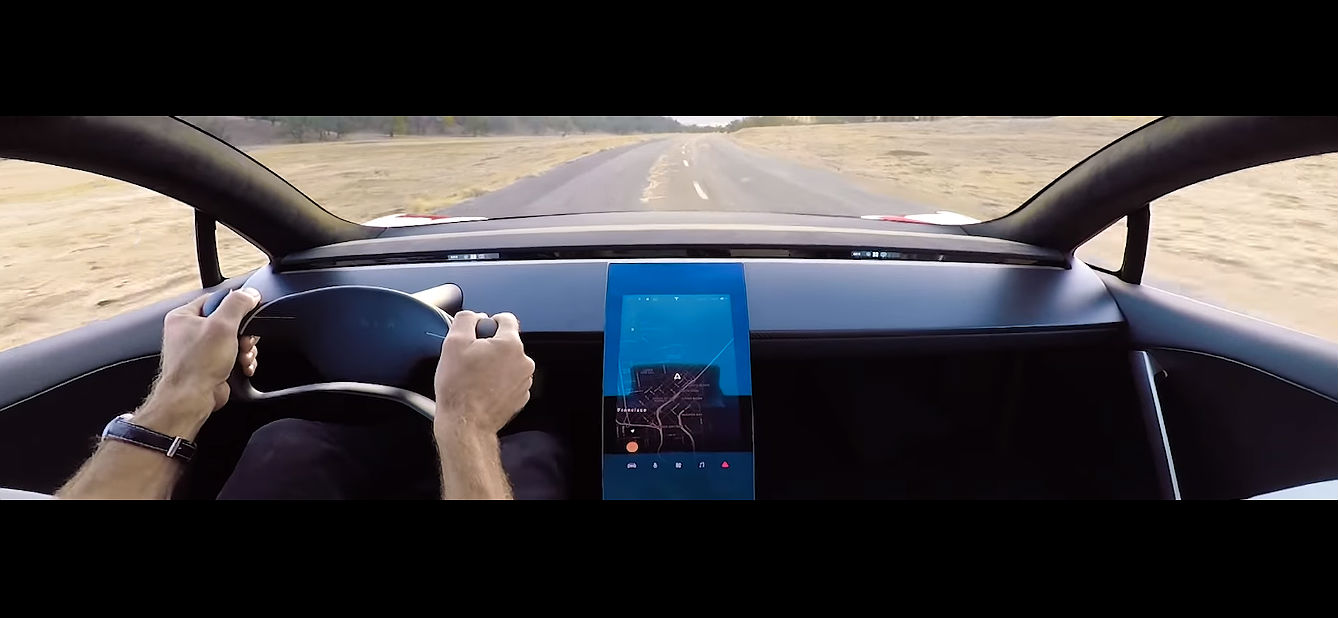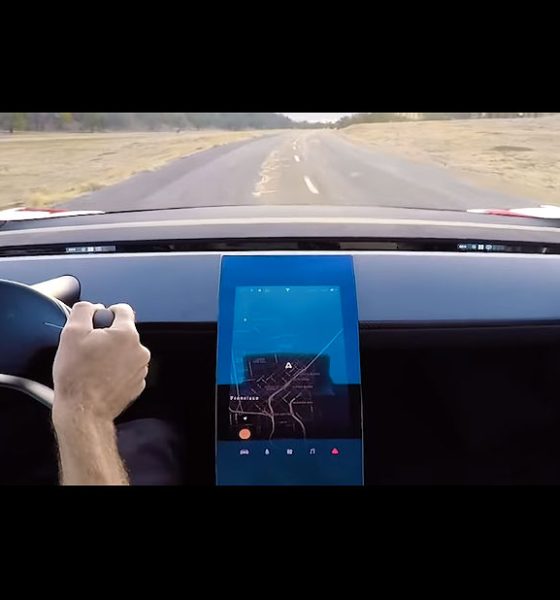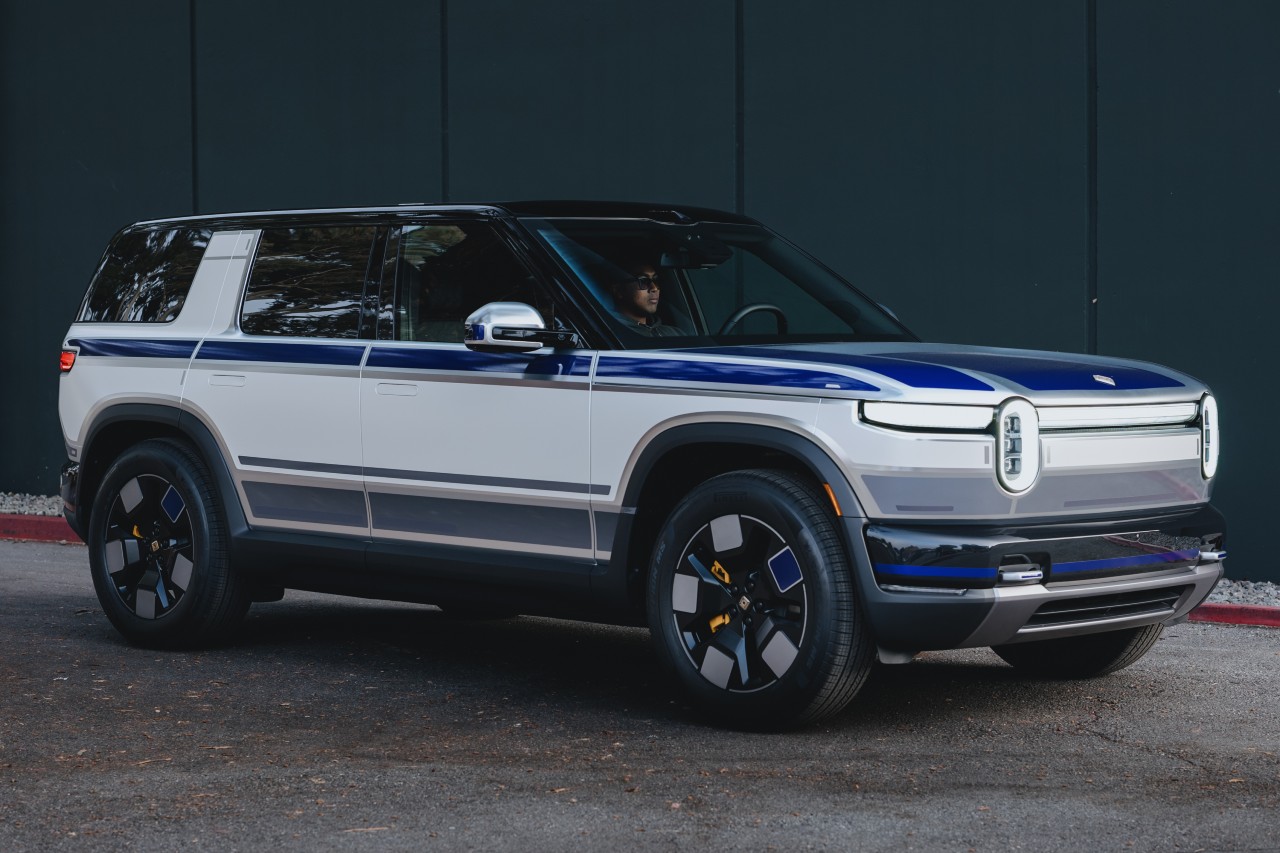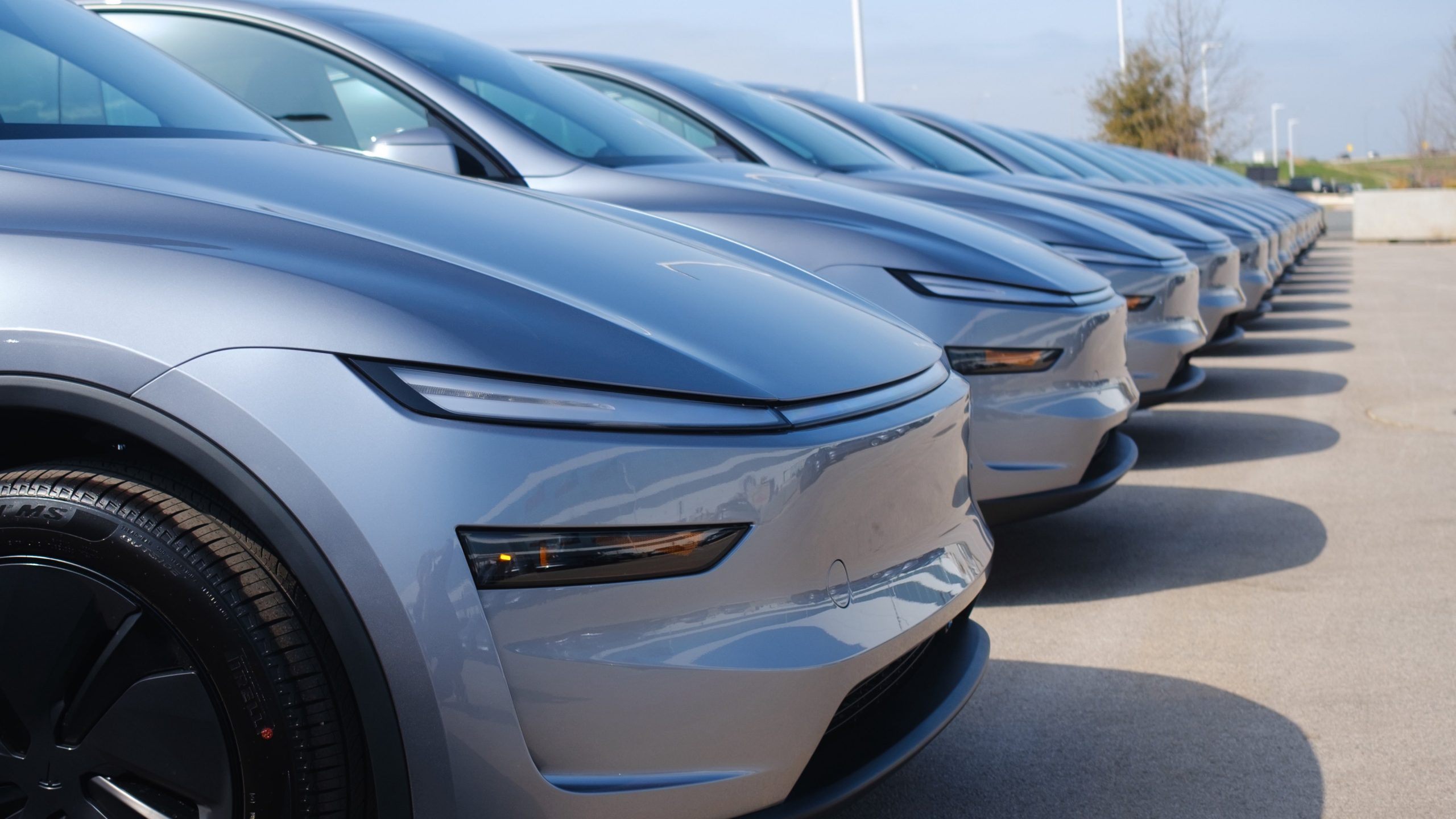

News
Next-gen Tesla Roadster’s “Augmented Mode” will enhance drivers’ abilities
In a recent update on Twitter, Elon Musk revealed that the next-generation Tesla Roadster would feature an “Augmented Mode” that is designed to enhance drivers’ abilities when operating the all-electric supercar.
Musk’s update came as a response to acclaimed YouTube tech reviewer and Tesla owner-enthusiast Marques Brownlee, who inquired if the next-generation Roadster will have Autopilot. Musk promptly responded, confirming the intelligent driver-assist feature and teasing one of the all-electric supercar’s unique capabilities.
Definitely. Will also have Augmented Mode that will massively enhance human driving ability. Like a flying metal suit, but in car form …
— Elon Musk (@elonmusk) June 8, 2018
While Musk’s mention of Augmented Mode and flying metal suits immediately drew references and comparisons to Marvel’s Iron Man and Tony Stark, Tesla has actually been laying the groundwork for integrating augmented reality technology into its electric cars for years. The electric car and energy company, for one, has been amassing talent with experience in the emerging field.
Back in late 2016, Tesla hired Andrew Kim as a Lead Designer at the company’s Design Studio in Hawthorne, CA. Prior to this employment at Tesla, Kim worked for Microsoft, where he helped develop the HoloLens headset, a holographic computer that allows users to see and interact with holograms within an environment.
When Microsoft launched the device back in 2016, the company demoed several uses for the headset, from gaming to holographic conferencing. In the auto industry, Volvo opted to use the HoloLens as a means for potential customers to interact with its vehicles. According to a Trusted Reviews report, the legacy automaker also expects to use the augmented reality technology in its future self-driving car initiatives.
Kim’s LinkedIn profile currently notes that his work at Tesla involves “leading experiences” in Model S, X, 3, Semi, Roadster, and Y, as well as “confidential future products and experiences.” Considering that Tesla’s vehicles are known for being on the bleeding edge of automotive technology, it is not difficult to speculate that the next-generation Roadster’s Augmented Mode could involve the incorporation of holographic images that can provide information such as suggested routes, driving tips, and safety warnings to drivers when operating the vehicle, similar to the technology showcased by Hyundai during CES 2015.
Augmented features are actually a perfect match to the all-electric supercar’s interior design. As could be seen in the prototype unveiled last November and the company’s quarterly all-hands promo video, the next-generation Roadster’s dashboard is almost just as, if not more minimalistic, than the Model 3. If any, the next-gen Roadster’s sparse dashboard provides ample space for Tesla to incorporate augmented reality technology.

A white next-gen Tesla Roadster makes an appearance during the 2018 annual shareholders meeting. [Credit: Dennis Pascual/Twitter]
The next-gen Tesla Roadster is nothing short of a beast. The all-electric supercar’s base variant, for one, already breaks several records, with a 0-60 mph time of 1.9 seconds, a quarter-mile time of 8.9 seconds, 10,000 Nm of torque, a range of 620 miles thanks to a 200 kWh battery, and a top speed of more than 250 mph. During Tesla’s 2018 Annual Shareholder Meeting, Musk announced that a SpaceX option would be available for the next-gen Roadster, which would push the capabilities of the electric car even further.
Considering the raw power of the upcoming all-electric supercar, there will only be very few drivers who could properly operate the next-gen Roadster to its full potential. Pushing a car with a top speed of more than 250 mph and a 0-60 mph time of 1.9 seconds at its base trim, after all, requires skill and reflexes that the average driver simply does not have, or at least was not trained to hone. Thus, features such as Augmented Mode would likely be a welcome feature for many future owners of the next-generation Roadster.
Tesla is steadily increasing its marketing efforts for the next-generation Roadster. During the Tesla’s 2018 Annual Shareholder Meeting, a stunning white variant of the all-electric supercar was unveiled. Last month, Elon Musk also announced that test drives for the vehicle would begin sometime near the end of next year.
Here’s a demonstration of Hyundai’s use of augmented reality technology for its vehicles in CES 2015.

News
Rivian unveils self-driving chip and autonomy plans to compete with Tesla
Rivian, a mainstay in the world of electric vehicle startups, said it plans to roll out an Autonomy+ subscription and one-time purchase program, priced at $49.99 per month and $2,500 up front, respectively, for access to its self-driving suite.

Rivian unveiled its self-driving chip and autonomy plans to compete with Tesla and others at its AI and Autonomy Day on Thursday in Palo Alto, California.
Rivian, a mainstay in the world of electric vehicle startups, said it plans to roll out an Autonomy+ subscription and one-time purchase program, priced at $49.99 per month and $2,500 up front, respectively, for access to its self-driving suite.
CEO RJ Scaringe said it will learn and become more confident and robust as more miles are driven and it gathers more data. This is what Tesla uses through a neural network, as it uses deep learning to improve with every mile traveled.
He said:
“I couldn’t be more excited for the work our teams are driving in autonomy and AI. Our updated hardware platform, which includes our in-house 1600 sparse TOPS inference chip, will enable us to achieve dramatic progress in self-driving to ultimately deliver on our goal of delivering L4. This represents an inflection point for the ownership experience – ultimately being able to give customers their time back when in the car.”
At first, Rivian plans to offer the service to personally-owned vehicles, and not operate as a ride-hailing service. However, ride-sharing is in the plans for the future, he said:
“While our initial focus will be on personally owned vehicles, which today represent a vast majority of the miles to the United States, this also enables us to pursue opportunities in the rideshare space.”
The Hardware
Rivian is not using a vision-only approach as Tesla does, and instead will rely on 11 cameras, five radar sensors, and a single LiDAR that will face forward.
It is also developing a chip in-house, which will be manufactured by TSMC, a supplier of Tesla’s as well. The chip will be known as RAP1 and will be about 50 times as powerful as the chip that is currently in Rivian vehicles. It will also do more than 800 trillion calculations every second.
Meet the Rivian Autonomy Processor.
Fast, smart, scalable and purpose-built for autonomous driving and the world of physical AI. Hitting the open road in 2026. pic.twitter.com/0wYXi5WKy7
— Rivian (@Rivian) December 11, 2025
RAP1 powers the Autonomy Compute Module 3, known as ACM3, which is Rivian’s third-generation autonomy computer.
ACM3 specs include:
- 1600 sparse INT8 TOPS (Trillion Operations Per Second).
- The processing power of 5 billion pixels per second.
- RAP1 features RivLink, a low-latency interconnect technology allowing chips to be connected to multiply processing power, making it inherently extensible.
- RAP1 is enabled by an in-house developed AI compiler and platform software
As far as LiDAR, Rivian plans to use it in forthcoming R2 cars to enable SAE Level 4 automated driving, which would allow people to sit in the back and, according to the agency’s ratings, “will not require you to take over driving.”
More Details
Rivian said it will also roll out advancements to the second-generation R1 vehicles in the near term with the addition of UHF, or Universal Hands-Free, which will be available on over 3.5 million miles of roadway in the U.S. and Canada.
More than any other feature, our owners have asked for more hands-free miles.
With Universal Hands-Free, you can now enjoy hands-free assisted driving on any road with clearly defined lanes. That’s roughly 3.5 million miles in the U.S. and Canada.
Look for it in our next… pic.twitter.com/ZFhwVzvt6b
— Rivian (@Rivian) December 11, 2025
Rivian will now join the competitive ranks with Tesla, Waymo, Zoox, and others, who are all in the race for autonomy.
News
Tesla partners with Lemonade for new insurance program
Tesla recently was offered “almost free” coverage for Full Self-Driving by Lemonade’s Shai Wininger, President and Co-founder, who said it would be “happy to explore insuring Tesla FSD miles for (almost) free.”

Tesla owners in California, Oregon, and Arizona can now use Lemonade Insurance, the firm that recently said it could cover Full Self-Driving miles for “almost free.”
Lemonade, which offered the new service through its app, has three distinct advantages, it says:
- Direct Connection for no telematics device needed
- Better customer service
- Smarter pricing
The company is known for offering unique, fee-based insurance rates through AI, and instead of keeping unclaimed premiums, it offers coverage through a flat free upfront. The leftover funds are donated to charities by its policyholders.
On Thursday, it announced that cars in three states would be able to be connected directly to the car through its smartphone app, enabling easier access to insurance factors through telematics:
Lemonade customers who own @Tesla vehicles in California, Oregon, and Arizona can now connect their cars directly to the Lemonade app! ⚡🚘
Direct connection = no telematics device needed 📵
Better customer experience 💃
Smarter pricing with Lemonade 🧠This is a game-changer… pic.twitter.com/jbabxZWT4t
— Lemonade (@Lemonade_Inc) December 11, 2025
Tesla recently was offered “almost free” coverage for Full Self-Driving by Lemonade’s Shai Wininger, President and Co-founder, who said it would be “happy to explore insuring Tesla FSD miles for (almost) free.”
The strategy would be one of the most unique, as it would provide Tesla drivers with stable, accurate, and consistent insurance rates, while also incentivizing owners to utilize Full Self-Driving for their travel miles.
Tesla Full Self-Driving gets an offer to be insured for ‘almost free’
This would make FSD more cost-effective for owners and contribute to the company’s data collection efforts.
Data also backs Tesla Full Self-Driving’s advantages as a safety net for drivers. Recent figures indicate it was nine times less likely to be in an accident compared to the national average, registering an accident every 6.36 million miles. The NHTSA says a crash occurs approximately every 702,000 miles.
Tesla also offers its own in-house insurance program, which is currently offered in twelve states so far. The company is attempting to enter more areas of the U.S., with recent filings indicating the company wants to enter Florida and offer insurance to drivers in that state.
News
Tesla Model Y gets hefty discounts and more in final sales push

Tesla Model Y configurations are getting hefty discounts and more benefits as the company is in the phase of its final sales push for the year.
Tesla is offering up to $1,500 off new Model Y Standard trims that are available in inventory in the United States. Additionally, Tesla is giving up to $2,000 off the Premium trims of the Model Y. There is also one free upgrade included, such as a paint color or interior color, at no additional charge.
NEWS: Tesla is now offering discounts of up to $1,500 off new Model Y Standard vehicles in U.S. inventory. Discounts of up to $2,000 are also being offered on Model Y Premiums.
These discounts are in addition to the one free upgrade you get (such as Diamond Black paint) on… pic.twitter.com/L0RMtjmtK0
— Sawyer Merritt (@SawyerMerritt) December 10, 2025
Tesla is hoping to bolster a relatively strong performance through the first three quarters of the year, with over 1.2 million cars delivered through the first three quarters.
This is about four percent under what the company reported through the same time period last year, as it was about 75,000 vehicles ahead in 2024.
However, Q3 was the company’s best quarterly performance of all time, and it surged because of the loss of the $7,500 EV tax credit, which was eliminated in September. The imminent removal of the credit led to many buyers flocking to Tesla showrooms to take advantage of the discount, which led to a strong quarter for the company.
2024 was the first year in the 2020s when Tesla did not experience a year-over-year delivery growth, as it saw a 1 percent slide from 2023. The previous years saw huge growth, with the biggest coming from 2020 to 2021, when Tesla had an 87 percent delivery growth.
This year, it is expected to be a second consecutive slide, with a drop of potentially 8 percent, if it manages to deliver 1.65 million cars, which is where Grok projects the automaker to end up.
Tesla will likely return to its annual growth rate in the coming years, but the focus is becoming less about delivery figures and more about autonomy, a major contributor to the company’s valuation. As AI continues to become more refined, Tesla will apply these principles to its Full Self-Driving efforts, as well as the Optimus humanoid robot project.
Will Tesla thrive without the EV tax credit? Five reasons why they might
These discounts should help incentivize some buyers to pull the trigger on a vehicle before the year ends. It will also be interesting to see if the adjusted EV tax credit rules, which allowed deliveries to occur after the September 30 cutoff date, along with these discounts, will have a positive impact.








